
Elbow pain can result from various causes, including overuse, injury, or underlying conditions like arthritis. While many cases improve with rest, ice, and medication, severe or persistent pain in your elbow joint may require physiotherapy, injections, or even surgery. This page explores symptoms, diagnosis and treatment options to help you find relief and regain your elbow function.
Your elbow is a complex joint where three bones meet: your humerus, ulna, and radius, and are supported by cartilage, ligaments, and tendons. This intricate structure allows essential movements like lifting and throwing. However, with so many moving parts, it’s no surprise that your elbow is vulnerable to injuries and conditions that can cause pain.
Whether it's a strain, inflammation of soft tissues like tendons, or damage to the bones, ligaments, or nerves, any disturbance can lead to discomfort. Most pain in the elbow joint is caused by simple issues such as overuse or minor strains and tends to resolve with rest and over-the-counter treatments. However, prolonged immobility can lead to stiffness and further complications, so gentle exercises can aid recovery and help prevent recurring problems.
In some cases, persistent or severe elbow joint pain may be linked to conditions like arthritis or require medical attention. By understanding the nature of elbow pain and its common causes, you can better manage symptoms and seek appropriate care.
Elbow pain can result from a variety of issues, ranging from minor strains to medical conditions affecting your joint and surrounding structures. Recognising the specific cause of your elbow pain is crucial for appropriate treatment to alleviate symptoms and restore functionality. If elbow soreness and pain persist, consulting a healthcare professional is recommended.
Here are the possible causes:
Overuse of tendons, such as in tennis elbow or golfer’s elbow, can cause inflammation, resulting in localised pain and difficulty with movement.
Inflammation of the bursa (a fluid-filled sac that cushions your joint) can lead to swelling and tenderness in your elbow, often due to repetitive motions or prolonged pressure on your joint.
After injury or surgery, scar tissue can lead to stiffness and restricted movement in your elbow.
Conditions like cubital tunnel syndrome occur when a nerve is compressed, causing pain, numbness, or tingling, often radiating down your arm.
Occasionally, your elbow may lock in a fixed position. This might be due to loose fragments of bone or cartilage within your joint that often require surgical removal to restore smooth movement.
Elbow pain can present in a variety of ways. The type, location, and accompanying symptoms can provide valuable clues about the underlying cause and guide treatment. Here are some common types of elbow pain and symptoms, along with potential causes:
Pain during elbow movement can result from:
If you have persistent elbow pain when bending and straightening your arm, you should see a healthcare professional.
Pain inside the elbow may result from:
Rest and activity modifications can help, but persistent inner elbow pain may need medical attention.
Elbow pain when lifting may result from:
Persistent pain may need professional evaluation.
There are a variety of elbow pain treatments and their use depends on the severity and cause of your condition.
Physiotherapy and targeted exercises are effective in improving flexibility and strength, while over-the-counter pain relief can offer quick solutions for managing discomfort.
For more severe cases, steroid injections or platelet-rich plasma (PRP) injections may be recommended to reduce pain and promote healing. If these treatments do not work, surgery might be considered to address the underlying issue and restore function.
Physiotherapy helps rebuild elbow strength, improve flexibility, and prevent reinjury. Stretching exercises and range-of-motion movements enhance mobility, while strengthening biceps and triceps with light weights or resistance bands supports recovery. With tailored guidance from a physiotherapist, your elbow can regain function and maintain long-term health.
Gentle exercises can help alleviate elbow pain, rebuild strength, and improve mobility aiding your recovery and helping to prevent future injuries. You should consult your doctor or physiotherapist before starting.
Here are examples of exercises often recommended for elbow pain caused by repetitive movement injuries like tennis elbow or golfer’s elbow:
For mild elbow pain, over-the-counter (OTC) medications can provide effective relief as your elbow heals. Common options include:
Steroid injections may be recommended if you have severe elbow pain or arthritis-related discomfort. These injections contain anti-inflammatory medication that helps reduce swelling and pain in the affected area. They can provide temporary relief, often lasting up to six weeks, depending on the type of injection.
For inflammatory arthritis, such as rheumatoid or psoriatic arthritis, specialists may inject the joint to manage symptoms and improve mobility.
Steroid injections are generally avoided for conditions like tennis or golfer’s elbow, as they may worsen these issues over time.
Platelet-rich plasma (PRP) injections are an emerging treatment for repetitive strain injuries like tennis and golfer’s elbow. Platelets, vital for blood clotting, also promote tissue repair and healing.
The procedure involves an orthopaedic specialist drawing a blood sample, processing it to concentrate the platelets, and injecting the enriched plasma into the affected area. Recent studies suggest PRP may reduce pain and improve mobility more effectively than steroid injections. However, PRP is not yet widely available in all hospitals across the UK.
Ramsay Health Care is pleased to offer PRP injections to promote healing and tissue regeneration for its patients.
While most cases of elbow pain can be managed with non-surgical treatments, a small number of patients may require surgery to alleviate symptoms and restore function. The type of elbow surgery depends on the underlying condition causing your elbow pain. You should discuss the benefits and risks of surgery with your doctor to determine the best approach for your condition.
When visiting your doctor for elbow joint pain, you can expect the examination to begin with questions to pinpoint the cause of your symptoms. These may include:
After gathering this information, your doctor may recommend tests such as:
Most cases of elbow pain will improve on their own with simple self-help treatments such as rest, ice, and over-the-counter medications. However, there are certain situations where you should see a doctor:
Emergency help needed
See a doctor urgently
Make a routine appointment
Hospital visit suggested
To quickly relieve elbow pain, try resting your joint, applying ice packs, using a compression bandage, and taking over-the-counter pain medications like ibuprofen. These steps can reduce swelling and discomfort effectively. If pain persists, consult a healthcare professional for further advice.
Elbow pain without injury can be caused by conditions like arthritis, tendonitis, bursitis, or nerve compression, such as cubital tunnel syndrome. Repetitive motions or overuse may also contribute to discomfort.
Symptoms of elbow tendonitis include pain, swelling, tenderness, and stiffness around your elbow joint, often worsening with movement or repetitive activity.
Elbow pain may be serious if it's accompanied by severe swelling, deformity, fever, numbness, or inability to move your joint. Seek medical attention for persistent or worsening symptoms.
Gentle stretching can help relieve elbow pain, but avoid overstretching or forcing movements. Consult a healthcare professional if your pain persists or worsens.
Elbow bursitis often feels like swelling, tenderness, and pain around your elbow, especially when pressing on or moving your joint. It may also cause warmth or redness in the area.
Whilst tennis elbow usually gets better if you rest and take painkillers, ignoring it can lead to prolonged pain on the outside of your elbow and more time off your normal activities and sports. It’s advisable that if you still have tennis elbow pain and symptoms after six weeks, you should see a healthcare provider for advice on other treatments for your tennis elbow.


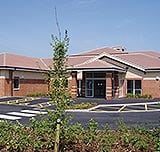
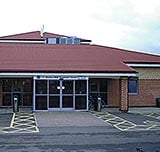

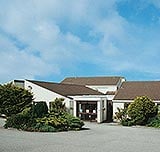














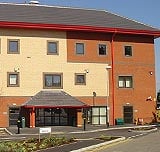


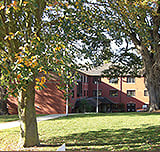

We are delighted to announce the appointment of Miss Sabeen Akhtar as the new Group Medical Director at Ramsay Health Care UK.
Springfield, part of Ramsay Health Care UK, is delighted to announce that men suffering from a benign enlarged prostate (Benign Prostatic Hyperplasia) will be able to receive robotic Aquablation Therapy.
Ramsay Health Care UK joined Leeds Pride to celebrate love, unity, and inclusion. Our growing culture of allyship ensures colleagues and patients feel seen, valued, and celebrated.
The information, including but not limited to, text, graphics, images and other material, contained on this website is for educational purposes only and not intended to be a substitute for medical advice, diagnosis or treatment. Always seek the advice of your physician or other qualified health care provider with any questions you may have regarding a medical condition or treatment.
No warranty or guarantee is made that the information contained on this website is complete or accurate in every respect. The testimonials, statements, and opinions presented on our website are applicable to the individuals depicted. Results will vary and may not be representative of the experience of others. Prior patient results are only provided as examples of what may be achievable. Individual results will vary and no guarantee is stated or implied by any photo use or any statement on this website.
Ramsay is a trusted provider of plastic or reconstructive surgery treatments as a part of our wrap-around holistic patient care. Our personal, friendly and professional team are here to support you throughout to ensure the best possible care. All procedures we perform are clinically justified.
*Acceptance is subject to status. Terms and conditions apply. Ramsay Health Care UK Operations Limited is authorised and regulated by the Financial Conduct authority under FRN 702886. Ramsay Healthcare UK Operations is acting as a credit broker to Chrysalis Finance Limited.
Ramsay Health Care UK is not currently recruiting for any roles based outside of England. If you are interested in applying for a role with Ramsay Health Care UK, please note that all available positions are advertised exclusively on our official website: https://www.ramsayhealth.co.uk/careers. Be cautious of individuals or organisations that approach you directly for remotely-based roles. Always verify the authenticity of the job offer and be careful with whom you share your personal information. For more information and advice on employment fraud, please visit: https://www.ramsayhealth.co.uk/careers/recruitment-fraud